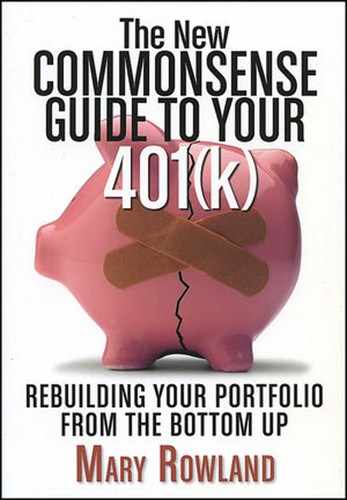ONE OF THE MOST BASIC PIECES of advice to investors is: diversify. Ten years ago, I told 401(k) plan investors that asset allocation—or selecting the right mix of asset classes such as international stocks, small-company stocks, large-company stocks, and bonds—was the key to successful investing. Combining different asset classes allows you to include assets that seem risky by themselves, like small stocks or emerging markets, and still create a portfolio with low volatility because of the correlation between these assets and they way they offset each other. Today, most investment professionals still advocate that strategy.
If you are an experienced investor, go for it. For the rest of us, investing has grown more complex over the past decade, and we may not feel like spending so much time parsing large-company stocks and separating them into core, growth, and value. For better and for worse, many employers who implement 401(k) plans for their employees have simplified the job by offering managed accounts, which means that a professional manager puts together a mix of asset classes and offers it in more and less aggressive flavors. The fastest growing type of fund investment is the target-date fund. The investor chooses the year he hopes to retire and makes that his target-date, such as 2030, and invests in the target-date 2030 fund.
Target-date funds were seen as a nearly miraculous solution to the problems of picking investments for the 401(k) plan, at least until the market disaster that began in 2008 when some of the flaws became apparent. Ron Surz of Target Date Analytics in San Clemente, California, conducts regular research on target-date funds and has written 2009 reports with names like "The Target-Date Emperor Has No Clothes" because his research showed that the closest-in funds, the 2010s, had lost considerable assets during the crash, just when investors who planned retirement in 2010 needed their assets.
We'll discuss target-date funds on p. 162. In this section on diversification, I'll repeat traditional asset-allocation wisdom that's still relevant. For investors with a long time horizon, stocks should represent the bulk of the portfolio. To determine how much, think again about your risk tolerance. Stocks have the highest average annual return over time but the path is bumpy. Adding bonds and/or cash to your portfolio cushions the ride. A portfolio of 60 percent stocks and 40 percent bonds is a typical mix and is roughly the make up of funds called "balanced funds."
But what if you've got the tolerance for risk and you want to go for the highest return? Many professional investors put 100 percent of their personal portfolios in stocks. Yet some studies show there is little extra to be gained with the final 15 percent. In other words, a long-term portfolio that is 85 percent in stocks and 15 percent in short-term bonds or cash might be ideal for an aggressive investor because it would provide market returns with a small cushion against market volatility. As I mentioned earlier, some financial advisors suggested even broader diversification in 2009, including assets such as gold, energy, currencies like the Swiss franc, and Treasury Inflation Protected Securities (TIPS). The principal of a TIPS bond increases with inflation and decreases with deflation, as measured by the consumer price index (CPI). When a TIPS matures, you are paid the adjusted principal or original principal, whichever is greater.
In the mid-1990s, the large company stocks that make up the major market indexes like the Dow Jones Industrials and the S&P 500 raced ahead, gaining 37 percent in 1995 and another 23 percent in 1996. The easiest, and worst, strategy is to be a follower, investing in a particular sector just as it eases off from big recent gains. The shifting fortunes of different investment categories prove the benefit of including each of them. Do not wait until a particular asset class takes off to get on the bandwagon. If you do, you miss out on much of the upswing.
A final word here about diversification: Investing in funds with different names does not mean you are diversifying. Fund names mean nothing. A great example of that is the once wildly popular Magellan Fund. Based on the investment prowess of its initial manager, Peter Lynch, this fund soared in assets to over $100 billion in 1999, long after Lynch was gone. To investors in the roaring bull market of the 1990s, the Magellan name was magic. The fund was not. Managing such a huge pile of assets and managing it well in hard times is virtually impossible. In 2009, the fund had shrunk to $15 billion.
